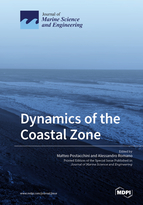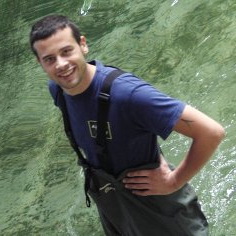Dynamics of the Coastal Zone
A special issue of Journal of Marine Science and Engineering (ISSN 2077-1312).
Deadline for manuscript submissions: closed (31 August 2019) | Viewed by 31305
Special Issue Editors
Interests: coastal hydraulics; shallow water modeling; estuarine dynamics; hydropower generation
Special Issues, Collections and Topics in MDPI journals
Interests: coastal engineering; physical and numerical modelling of water waves; landslide-generated tsunamis; wave-structure interaction (wave overtopping and impacts)
Special Issue Information
Dear Colleagues,
The coastal zone hosts many human activities and interests, which have significantly increased in the last few decades. However, climate change may have destabilizing effects on such activities all over the world: Sea level rise and storms of increasing intensity can severely affect beaches and coastal structures, with negative consequences for coastal communities from different (e.g., ecological, recreational, environmental) points of view. These aspects need to be combined with the present scenario, where important issues, such as coastal flooding and beach erosion, already lead to large economic losses and, at times, to human fatalities.
Analytical and numerical modelling, laboratory experiments, and field campaigns are all fundamental approaches to be jointly used by scientists for an exhaustive understanding of the nearshore region. For this purpose, innovative tools and technologies may help to provide a more detailed interpretation of the coastal processes, in terms of hydrodynamics, sediment transport and bed morphology.
The present Special Issue is thus devoted to the most recent studies and advances on the dynamics of the nearshore region.
Dr. Matteo Postacchini
Dr. Alessandro Romano
Guest Editors
Manuscript Submission Information
Manuscripts should be submitted online at www.mdpi.com by registering and logging in to this website. Once you are registered, click here to go to the submission form. Manuscripts can be submitted until the deadline. All submissions that pass pre-check are peer-reviewed. Accepted papers will be published continuously in the journal (as soon as accepted) and will be listed together on the special issue website. Research articles, review articles as well as short communications are invited. For planned papers, a title and short abstract (about 100 words) can be sent to the Editorial Office for announcement on this website.
Submitted manuscripts should not have been published previously, nor be under consideration for publication elsewhere (except conference proceedings papers). All manuscripts are thoroughly refereed through a single-blind peer-review process. A guide for authors and other relevant information for submission of manuscripts is available on the Instructions for Authors page. Journal of Marine Science and Engineering is an international peer-reviewed open access monthly journal published by MDPI.
Please visit the Instructions for Authors page before submitting a manuscript. The Article Processing Charge (APC) for publication in this open access journal is 2600 CHF (Swiss Francs). Submitted papers should be well formatted and use good English. Authors may use MDPI's English editing service prior to publication or during author revisions.
Keywords
- Coastal region
- Surf zone
- Swash zone
- Beach erosion
- Hydrodynamics
- Morphodynamics
- Field and laboratory experiments
- Analytical and numerical modeling
- Statistical methods
- Climate change effects on coastal dynamics







